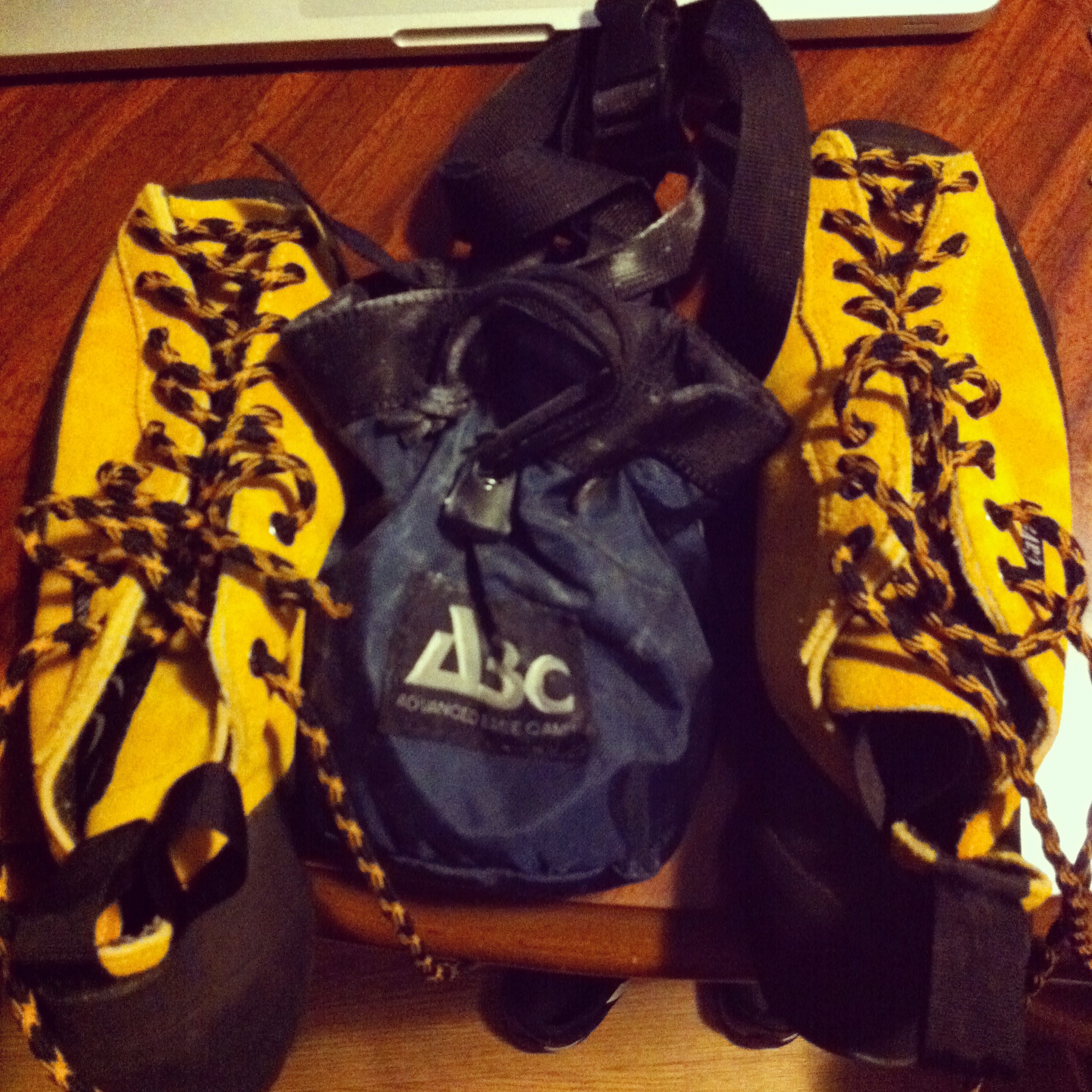Climbing Gear
There are three main pieces of gear that climbers (indoor climbers, at least) tend to get:
- Climbing Chalk and Bag
- Harness
- Climbing Shoes

Climbers use their hands and fingers a lot for climbing, and they tend to get wet (primarily from sweat), so chalk helps to dry out hands and give the climber a rough, firm hold on the rock.
After the hands, the part of the body that touches the wall the most is the foot. Climbing shoes have a stiff sole and narrow toe which allows the climber to put a lot of weight on a single point on the wall. The sole is also a rough rubber, which allows the climber to put weight on a piece of wall or rock from which a normal shoe would slide right off.
The harness is an essential piece of equipment for climbing (a climber can climb without chalk or special shoes), but owning a nice one is not necessary. The harness is primarily used when rappelling down the wall, resting on the wall, or falling while climbing. In these three times, having a nicer harness will provide more comfort. Nicer harnesses are often also easier to put on. A harness, however, doesn't provide any advantage for climbing, which is why I chose not to get (yet).
I've been using the chalk for a few days now, and I've only used the shoes one day, but I love them both, and I think they are both extremely helpful for climbing. I highly recommend chalk for an amateur climber, and shoes for an amateur to avid climber.
After these three pieces of equipment, climbers get things like crash pads, Grigris or ATCs, ropes, carabiners, and helmets. All of these are essential for climbing outdoors, or climbing unsupervised (not in a staffed location).
Anyone can climb. Don't let your height, foot size (some people feel that large feet are bad, since you have small footholds, but this is not necessarily the case), or strength (I've seen big muscly guys fail to climb a beginner route and small lanky girls climb advanced routes) deter you from trying it out. It's not for everyone, but it is for anyone. Most places you go will have basic gear for rent, like harnesses (free or cheap), and shoes (which vary in quality and price) for a bit more.

